- The Importance of Spring Pruning for Apple Trees
- Benefits of Spring Pruning
- Pruning Techniques
- Conclusion
- Optimal Timing for Spring Pruning
- 1. Wait for the Coldest Part of Winter to Pass
- 2. Prune Before the Buds Break Dormancy
- 3. Avoid Pruning During Wet Conditions
- 4. Consider the Variety of Apple Tree
- Tools and Equipment for Pruning Apple Trees
- 1. Pruning Shears
- 2. Loppers
- 3. Pruning Saw
- 4. Pole Pruner
- 5. Gloves
- 6. Safety Goggles
- 7. Pruning Sealant
- 8. Ladder
- Steps to Properly Prune Apple Trees
- Pruning Techniques for Tree Health and Fruit Production
- 1. Timing of Pruning
- 2. Thin Out Overcrowded Branches
- 3. Prune Diseased and Damaged Branches
- 4. Maintain a Central Leader or Modified Central Leader
- 5. Remove Water Sprouts and Suckers
- 6. Consider the Fruiting Zones
- 7. Prune to Encourage Airflow
- 8. Prune for Size Control
- 9. Use Proper Pruning Tools and Techniques
- 10. Seek Professional Assistance if Needed
- Common Mistakes to Avoid When Pruning Apple Trees
- 1. Pruning at the Wrong Time
- 2. Overpruning
- 3. Neglecting to Prune Crossing or Rubbing Branches
- 4. Pruning During Wet Conditions
- 5. Using Dull or Dirty Pruning Tools
- 6. Ignoring the Tree’s Natural Shape
- 7. Failure to Remove Suckers
- Pruning Tips for Different Types of Apple Tree
- 1. Standard Apple Trees
- 2. Semi-Dwarf Apple Trees
- 3. Dwarf Apple Trees
- 4. Espalier Apple Trees
- 5. Columnar Apple Trees
- Benefits of Spring Pruning for Apple Trees
- 1. Stimulates Growth
- 2. Improves Air Circulation
- 3. Shapes the Tree
- 4. Prevents Disease
- 5. Manages Tree Size
- Maintenance and Care after Pruning Apple Trees
- 1. Clean Up
- 2. Mulch
- 3. Watering
- 4. Fertilizing
- 5. Pest and Disease Control
- 6. Support
- 7. Pruning Maintenance
- 8. Regular Inspections
- 9. Training and Shaping
- Question-answer:
- When is the best time to prune apple trees?
- What are the benefits of pruning apple trees?
- What tools do I need for pruning apple trees?
- How much should I prune my apple tree?
- Can pruning apple trees help prevent diseases?
- Should I prune my apple tree if it has already started blooming?
- Is it necessary to use pruning seal on apple tree wounds?
- Video: How to Prune an Apple Tree!
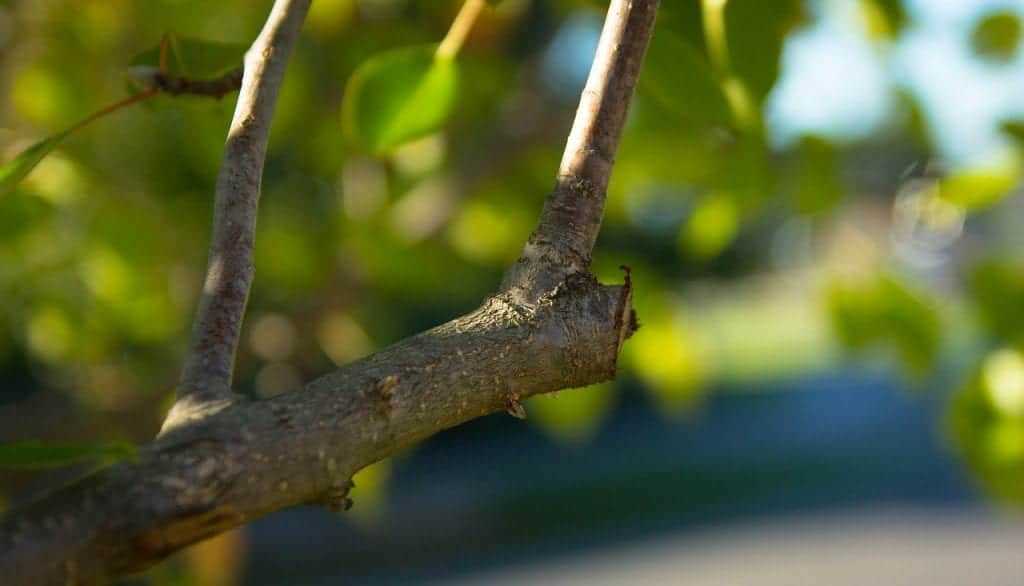
Spring is the perfect time to prune your apple trees and ensure a bountiful harvest. Pruning is an essential task for any apple tree owner, as it helps to maintain the health and shape of the tree, encourages fruit production, and prevents the spread of diseases. In this article, we will provide you with essential tips and guidelines for spring pruning to help you achieve the best results.
Firstly, it’s important to understand the goals of spring pruning. The primary goal is to remove any dead, damaged, or diseased branches, as well as any branches that are crossing or rubbing against each other. This not only improves the overall appearance of the tree but also allows for better airflow and sunlight penetration to promote healthy growth. Pruning also helps to control the size and shape of the tree, making it more manageable and easier to harvest.
When pruning apple trees, it’s crucial to use the right tools and techniques. Start by using sharp and clean pruning shears or loppers to make clean cuts. Remove any branches that are less than pencil-thick, as they are unlikely to produce much fruit. It’s also recommended to remove any vertical “suckers” that grow from the base of the tree, as they can divert energy from the main branches. Additionally, consider thinning out crowded areas to allow for better light penetration and air circulation.
Finally, after pruning, it’s vital to properly care for the tree to support its recovery and growth. Apply a thin layer of mulch around the base of the tree to retain moisture and control weeds. Regularly water the tree, especially during dry spells, and monitor for any signs of pests or diseases. Depending on the variety, you may also need to consider fertilizing the tree to ensure optimal fruit production.
In conclusion, spring pruning is a crucial task for apple tree owners to maintain tree health, improve fruit production, and prevent diseases. By following these essential tips and guidelines, you can ensure that your apple tree thrives and provides you with a bountiful harvest. Happy pruning!
The Importance of Spring Pruning for Apple Trees
Spring pruning is a crucial step in maintaining the health and productivity of apple trees. By removing certain branches and shaping the tree, you can help promote a better balance of growth and fruit production.
Benefits of Spring Pruning
- Promotes Air Circulation: Pruning helps to create space between branches, allowing for better air circulation throughout the tree. This can reduce the risk of disease and pest infestation.
- Enhances Sunlight Exposure: By removing excess branches and thinning the canopy, more sunlight can reach the inner parts of the tree. This promotes better fruit development and ripening.
- Controls Tree Size: Pruning is necessary to manage the size and shape of apple trees. This is important for easier maintenance, harvesting, and overall tree structure.
- Stimulates New Growth: Pruning can stimulate new growth by removing older, unproductive branches. This encourages the development of new shoots and improves fruiting potential.
Pruning Techniques
When pruning an apple tree in spring, it’s important to follow proper techniques to ensure the best results:
- Remove Dead or Damaged Branches: Start by identifying and removing any dead, diseased, or damaged branches. This helps to prevent the spread of disease and allows the tree to allocate its resources more efficiently.
- Thin Out Excess Branches: Thin out the canopy by removing overcrowded branches. This helps improve air circulation and sunlight penetration.
- Shape the Tree: Prune the tree to create a balanced shape, removing any branches that are growing in undesirable directions. This helps to maintain a strong tree structure.
- Prune to Encourage Fruit Production: Identify and selectively prune branches to promote a better balance between vegetative growth and fruit production. This can be done by removing overly vigorous branches or branches that have not produced fruit in previous years.
Conclusion
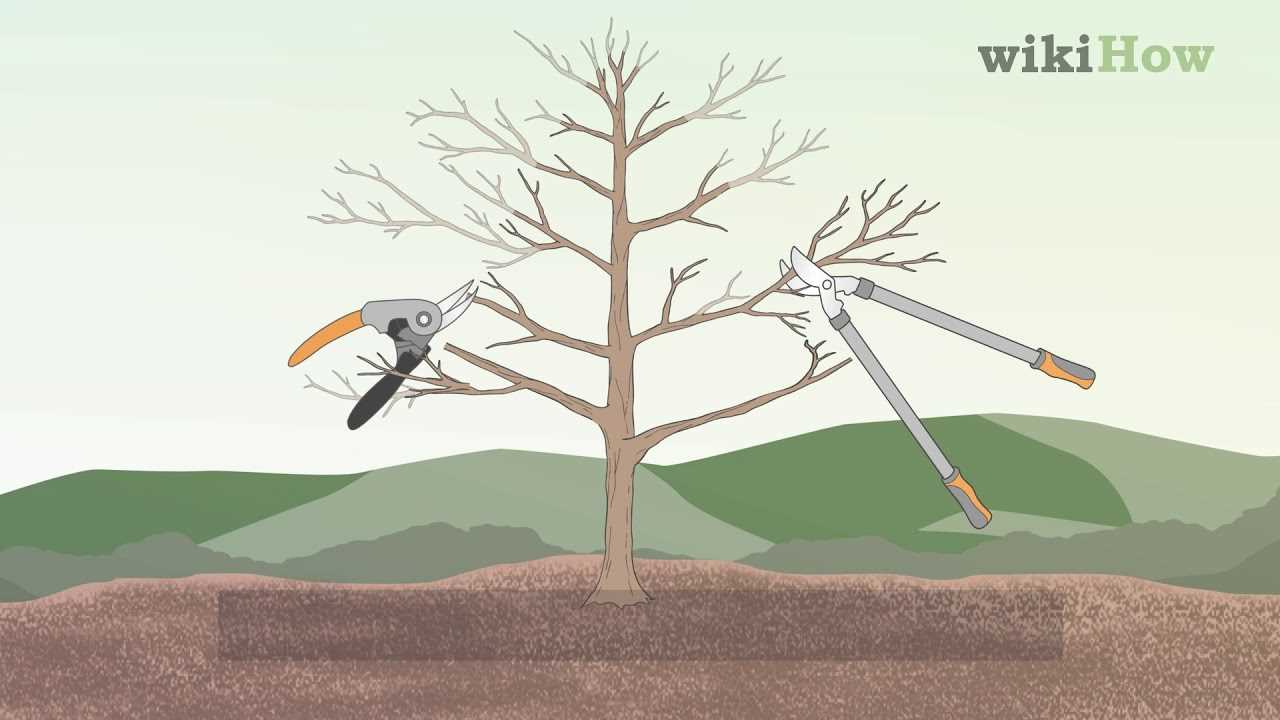

Spring pruning plays a vital role in maintaining the health and productivity of apple trees. By understanding the benefits and following proper pruning techniques, you can help ensure a bountiful harvest and healthy tree growth for years to come.
Optimal Timing for Spring Pruning
Spring is the ideal time to prune apple trees, as it allows them to heal quickly and promotes optimal fruit production. However, the exact timing for pruning can vary depending on your specific climate and the variety of apple tree you have. Here are some general guidelines to follow:
1. Wait for the Coldest Part of Winter to Pass
It’s important to wait until the coldest part of winter has passed before you begin pruning. Pruning too early can leave the tree vulnerable to frost damage. As a general rule, wait until late winter or early spring when temperatures start to rise above freezing consistently.
2. Prune Before the Buds Break Dormancy
Pruning should be done before the buds on the apple tree begin to break dormancy and show signs of growth. This typically occurs in early spring, just before new leaves or flowers start to emerge. Pruning at this time allows the tree to allocate its energy correctly and encourages vigorous growth.
3. Avoid Pruning During Wet Conditions
It’s best to avoid pruning apple trees during wet conditions, as the moisture can increase the likelihood of disease transmission. Instead, choose a dry day when the tree and its pruning tools are dry. This will help minimize the risk of infection.
4. Consider the Variety of Apple Tree
Different varieties of apple trees may have specific pruning needs. Some varieties may require more extensive pruning to maintain a desired shape or size, while others may require minimal pruning. Research the specific requirements for your apple tree variety to ensure you are pruning it correctly.
Remember, always use clean and sharp pruning tools to make clean cuts and minimize the risk of disease. If you are unsure about how to prune your apple tree, consider consulting a professional arborist who can guide you through the process.
Tools and Equipment for Pruning Apple Trees
Pruning apple trees is an essential task for maintaining their health and productivity. To accomplish this task effectively, you will need several tools and equipment. Here is a list of the essential items you should have:
1. Pruning Shears
Pruning shears, also known as hand pruners or secateurs, are one of the most important tools for apple tree pruning. They are designed to make clean cuts on small branches and twigs. Look for pruning shears with a sharp, high-quality blade and comfortable handles that fit well in your hand.
2. Loppers
Loppers are essential for pruning apple trees with thicker branches. They have long handles and larger blades, allowing you to cut branches that are too big for pruning shears. Look for loppers with a bypass cutting action, as they provide cleaner cuts and reduce the risk of damaging the tree.
3. Pruning Saw
A pruning saw is necessary for removing larger branches or limbs from apple trees. Look for a pruning saw with a curved blade and sharp teeth. This type of saw allows you to make both cutting and pulling strokes, making it easier to remove larger branches.
4. Pole Pruner
A pole pruner is useful for reaching high branches without the need for a ladder. It consists of a long pole with a cutting head at the end. Some pole pruners have a saw blade attachment, allowing you to remove larger branches as well.
5. Gloves
Wearing gloves is essential for protecting your hands while pruning apple trees. Look for gloves that fit well and provide a good grip. Choose gloves that are sturdy enough to protect against thorns and other sharp branches.
6. Safety Goggles
Safety goggles are important for protecting your eyes from debris and small particles while pruning. Choose goggles that fit securely and provide clear vision.
7. Pruning Sealant
Pruning sealant is a product used to seal cuts and wounds on apple trees. Applying pruning sealant helps prevent disease and pests from entering the tree. Look for a sealant that is specifically formulated for fruit trees.
8. Ladder
A ladder is needed for accessing high branches that cannot be reached with a pole pruner. Choose a sturdy ladder that is suitable for outdoor use and provides stability while pruning.
Having the right tools and equipment is crucial for successful apple tree pruning. Make sure to invest in high-quality tools that will last for years and always prioritize safety while working with sharp tools and equipment.
Steps to Properly Prune Apple Trees
Pruning apple trees is an essential part of their care and maintenance. Proper pruning helps to promote healthy growth, increase fruit yields, and maintain an attractive shape for your apple tree. Here are the steps to properly prune apple trees:
- Choose the right time: Pruning should be done during the tree’s dormant season, typically in late winter or early spring before new growth begins. Avoid pruning during wet or freezing weather.
- Gather the necessary tools: To properly prune apple trees, you will need a pair of sharp pruning shears, loppers for thicker branches, a pruning saw for larger cuts, and safety equipment like gloves and safety glasses.
- Start with dead and diseased wood: Begin by identifying and removing any dead or diseased branches. These branches can harbor pests and diseases, so removing them is essential for the tree’s overall health.
- Thin the canopy: Next, thin out the canopy by removing any crossing or rubbing branches. Aim for an open and airy canopy that allows light and air to reach all parts of the tree. This helps to prevent disease and encourages even fruit development.
- Prune for shape: To maintain a desirable shape, selectively cut back branches to promote outward growth and prevent overcrowding. Remove any branches that are growing inward or downward.
- Consider the growth habit: Different apple tree varieties have different growth habits, such as upright, spreading, or weeping. Prune accordingly to maintain their natural shape and form.
- Be mindful of fruiting wood: Apple trees produce fruit on spurs, which are short, stubby branches. Avoid pruning these spurs, as they are responsible for producing future fruit. Instead, focus on removing water sprouts and excessive growth.
- Make clean cuts: When making cuts, do so at a slight angle just above a bud or lateral branch. Avoid leaving stubs, as they can lead to disease and decay. Use clean pruning tools to prevent the spread of infection.
- Step back and assess: After pruning, step back and assess the tree’s overall shape and structure. Make any additional cuts or adjustments as needed to achieve your desired outcome.
- Dispose of pruned material: Properly dispose of pruned branches and debris to prevent the spread of pests and diseases. Consider chipping or composting the material if possible.
Following these steps will help you properly prune your apple trees and promote their health and productivity. Remember to always consult specific pruning guidelines for your particular apple tree variety as different varieties may have unique pruning requirements.
Pruning Techniques for Tree Health and Fruit Production
1. Timing of Pruning
Pruning should ideally be done during the dormant season, before the buds start to swell in early spring. This allows the tree to heal more quickly and reduces the risk of disease or insect infestation.
2. Thin Out Overcrowded Branches
Remove branches that are crossing, rubbing, or growing too close together. This will allow for better air circulation and light penetration, reducing the risk of disease and promoting healthy growth.
3. Prune Diseased and Damaged Branches
Inspect the tree for any branches that are showing signs of disease or physical damage. Prune these branches back to healthy wood, making sure to remove them completely. This will prevent the spread of disease and allow the tree to allocate its resources effectively.
4. Maintain a Central Leader or Modified Central Leader
Apple trees can be pruned to have a central leader, where one main trunk is trained to grow straight up and becomes the dominant leader. Alternatively, a modified central leader system can be employed where multiple well-spaced branches are trained to grow upwards. Both methods help maintain the tree’s shape, improve fruit quality, and make it easier to harvest.
5. Remove Water Sprouts and Suckers
Water sprouts are vertical shoots that emerge from the trunk or branches, while suckers grow from the base of the tree. These growths compete with the main branches for resources and should be pruned to maintain a well-formed tree structure.
6. Consider the Fruiting Zones
Apple trees produce fruit on short spurs along branches that are 2-4 years old. When pruning, make sure to leave enough of these fruiting branches intact for optimal fruit production. Remove any excessively long branches that are not likely to bear fruit in the coming years.
7. Prune to Encourage Airflow
Thin out the canopy by removing some of the smaller interior branches. This will allow for better air circulation, reducing the risk of fungal diseases and promoting healthier growth.
8. Prune for Size Control
If your apple tree is becoming too large or obstructive, prune back the branches to maintain a manageable size. However, be cautious not to remove more than 25% of the tree’s total canopy in a single season.
9. Use Proper Pruning Tools and Techniques
Always use clean, sharp pruning tools to make clean cuts and reduce the risk of damaging the tree. Make cuts at a slight angle just outside the branch collar, avoiding leaving stubs or cutting too close to the trunk.
10. Seek Professional Assistance if Needed
If you are unsure about pruning your apple tree or dealing with disease-infected branches, it is best to seek the assistance of a professional arborist who can provide expert advice and ensure the health and longevity of your tree.
Common Mistakes to Avoid When Pruning Apple Trees
Pruning apple trees is an essential task that helps maintain their health, productivity, and shape. However, there are some common mistakes that people make when pruning apple trees. By avoiding these mistakes, you can ensure that your apple trees thrive and produce abundant fruit.
1. Pruning at the Wrong Time
Pruning apple trees at the wrong time can be detrimental to their growth. It is important to prune apple trees during their dormant season, which is typically in late winter or early spring before the buds start to break. Pruning during this period encourages new growth and ensures that the tree has enough time to heal before the start of the growing season.
2. Overpruning
Overpruning can weaken apple trees and reduce their ability to produce fruit. It is important to strike a balance between removing enough branches to improve air circulation and sunlight penetration while preserving enough of the tree’s structure to support fruit production. Avoid removing more than 25% of the tree’s branches in a single pruning session.
3. Neglecting to Prune Crossing or Rubbing Branches
Branches that cross or rub against each other can cause wounds and create entry points for pests and diseases. Neglecting to prune these branches can lead to long-term damage to your apple trees. Always identify and remove crossing or rubbing branches during pruning to maintain the tree’s health and structure.
4. Pruning During Wet Conditions
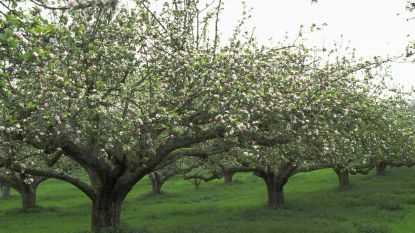

Pruning apple trees when the branches and foliage are wet can increase the risk of spreading diseases. Wet conditions provide an ideal environment for fungal and bacterial infections to thrive. It is best to prune apple trees when the weather is dry to minimize the spread of diseases.
5. Using Dull or Dirty Pruning Tools
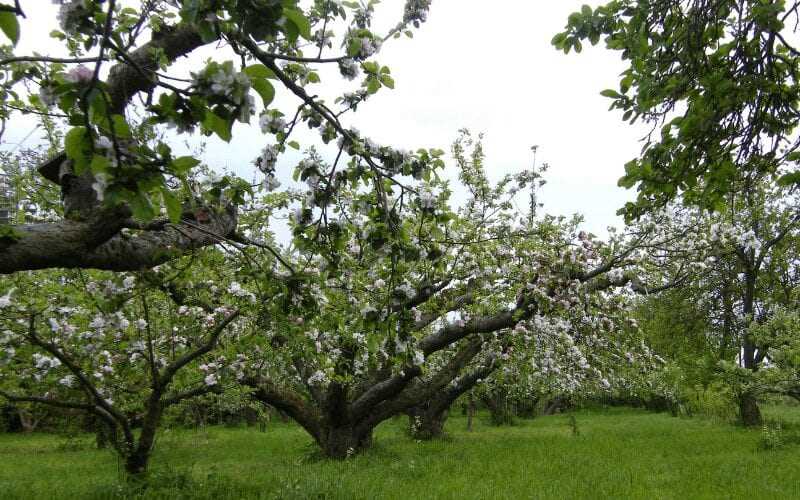

Using dull or dirty pruning tools can result in uneven cuts and increase the risk of introducing pathogens to the tree. Always ensure that your pruning tools are sharp and clean before pruning apple trees. Clean your tools with a disinfectant solution between cuts to prevent the spread of diseases.
6. Ignoring the Tree’s Natural Shape
Every apple tree has a natural growth habit and shape. Ignoring the tree’s natural shape during pruning can disrupt its growth and lead to imbalances in fruit production. It is important to understand the tree’s growth habit and prune accordingly, promoting a balanced growth and fruiting structure.
7. Failure to Remove Suckers
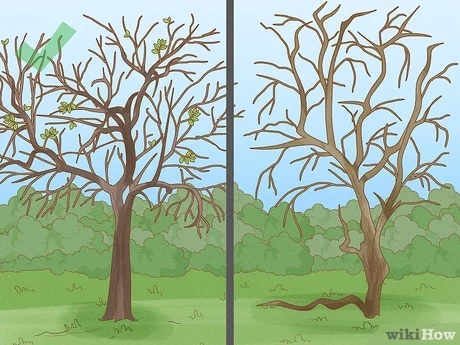

Suckers are vigorous shoots that arise from the base of the tree or from the rootstock. Failure to remove suckers can divert the tree’s energy away from fruit production and lead to a less productive tree. Regularly inspect your apple tree and remove suckers promptly to ensure optimal fruit production.
By avoiding these common mistakes when pruning apple trees, you can promote their health, productivity, and overall appearance. Regular and proper pruning will ensure that your apple tree thrives and provides you with a bountiful harvest for years to come.
Pruning Tips for Different Types of Apple Tree
1. Standard Apple Trees
Standard apple trees are the traditional type of apple tree that can grow up to 30 feet tall. When pruning these trees, keep the following tips in mind:
- Prune during late winter or early spring, before new growth starts.
- Remove any dead, diseased, or damaged branches.
- Thin out the tree, removing crowded branches to improve air circulation and light penetration.
- Train the tree into a central leader shape by selecting one central branch as the main trunk and removing competing branches.
- Prune to maintain an open shape, allowing sunlight to reach all parts of the tree.
2. Semi-Dwarf Apple Trees
Semi-dwarf apple trees are smaller than standard trees, typically reaching a height of about 15 feet. When pruning these trees, consider the following tips:
- Prune during late winter or early spring, before new growth starts.
- Remove any dead or diseased branches.
- Thin out crowded branches to improve air circulation and light penetration.
- Train the tree into a central leader shape by selecting one central branch as the main trunk and removing competing branches.
- Prune to maintain an open shape, allowing sunlight to reach all parts of the tree.
3. Dwarf Apple Trees
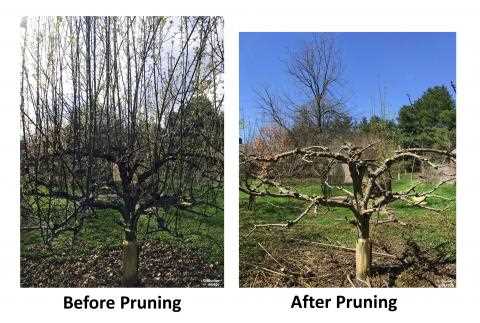

Dwarf apple trees are the smallest type of apple tree, reaching heights of about 6 to 10 feet. When pruning these trees, keep the following tips in mind:
- Prune during late winter or early spring, before new growth starts.
- Remove any dead or diseased branches.
- Thin out crowded branches to improve air circulation and light penetration.
- Train the tree into a central leader shape by selecting one central branch as the main trunk and removing competing branches.
- Prune to maintain an open shape, allowing sunlight to reach all parts of the tree.
4. Espalier Apple Trees
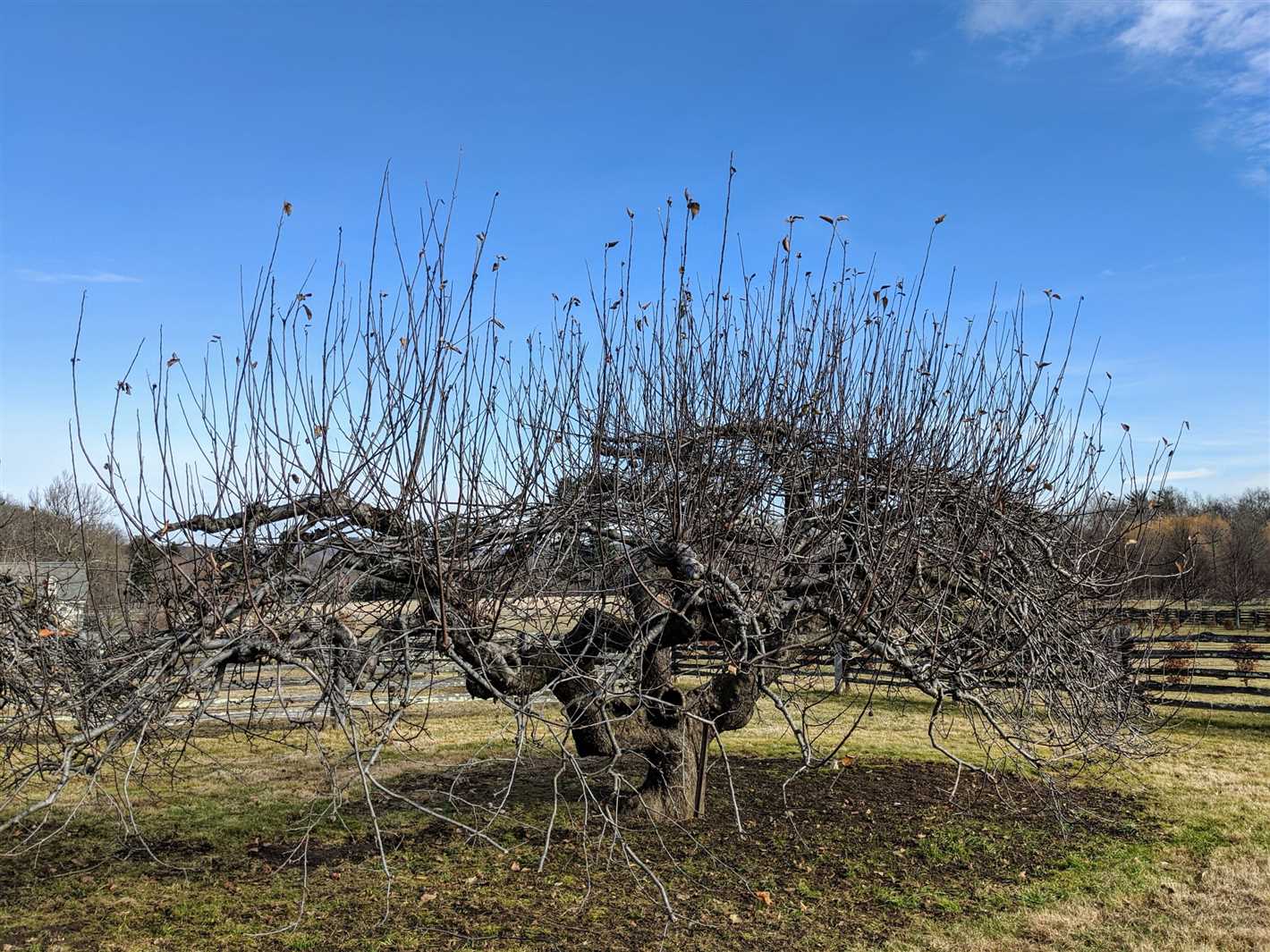

Espalier apple trees are trained to grow flat against a wall or fence. When pruning these trees, consider the following tips:
- Prune during late winter or early spring, before new growth starts.
- Remove any dead or diseased branches.
- Prune to maintain the desired shape and size, following the espalier training system.
- Thin out branches to improve air circulation and light penetration.
- Regularly prune new growth to maintain the desired shape and encourage fruit production.
5. Columnar Apple Trees
Columnar apple trees are narrow, upright trees that are ideal for small gardens or containers. When pruning these trees, keep the following tips in mind:
- Prune during late winter or early spring, before new growth starts.
- Remove any dead or diseased branches.
- Thin out crowded branches to improve air circulation and light penetration.
- Train the tree into a central leader shape by selecting one central branch as the main trunk and removing competing branches.
- Prune to maintain an open shape, allowing sunlight to reach all parts of the tree.
Remember, proper pruning techniques and timing are essential for maintaining healthy and productive apple trees. Always consult a pruning guide or seek advice from a horticulturist for specific recommendations based on your apple tree variety.
Benefits of Spring Pruning for Apple Trees
Pruning apple trees in the spring offers several benefits for the health and productivity of the trees. By removing certain branches and shaping the tree, you can encourage better fruit production, disease prevention, and overall tree vigor.
1. Stimulates Growth
Pruning apple trees in the spring stimulates new growth by removing older and unproductive branches. This encourages the tree to redirect its energy towards producing new shoots and fruiting wood, leading to increased fruit production.
2. Improves Air Circulation
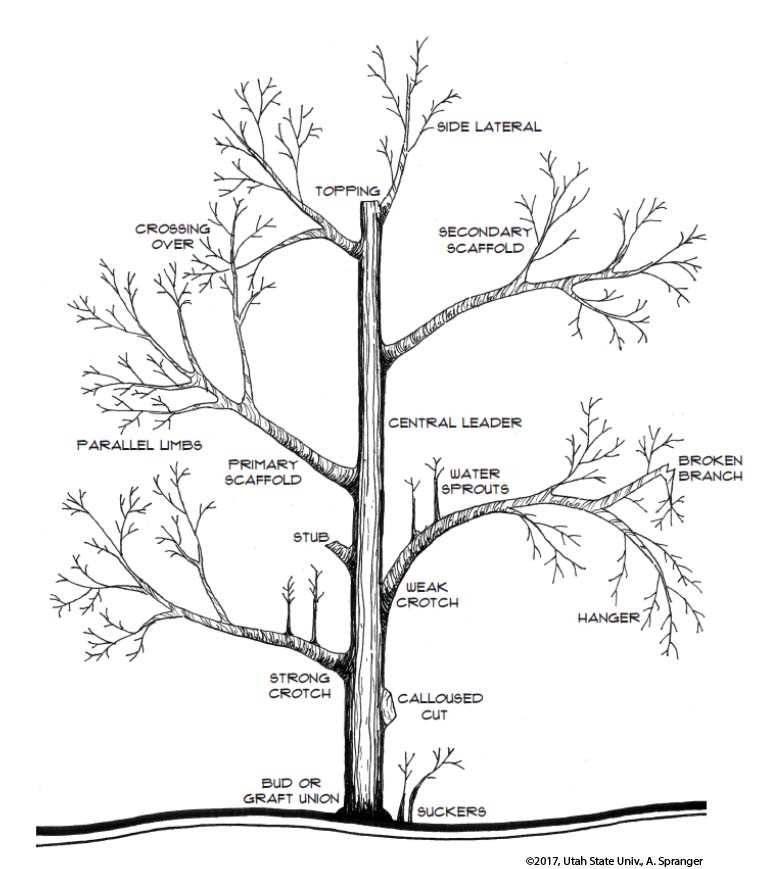

Pruning helps improve air circulation by opening up the canopy of the tree. This allows sunlight to reach the inner parts of the tree, reducing the risk of pest and disease problems. Good air circulation also helps in drying out the foliage, which can prevent the development of fungal diseases like apple scab.
3. Shapes the Tree
Spring pruning allows you to shape the apple tree according to your desired form. By removing unwanted branches and encouraging a proper structure, you can promote better light penetration and easier fruit harvesting. Shaping the tree also improves aesthetics and makes it easier to manage and care for.
4. Prevents Disease
Pruning in the spring can help prevent the spread of diseases within the apple tree. By removing dead or diseased branches, you eliminate potential sources of infection and minimize the risk of disease outbreaks. Proper thinning and pruning also reduce overcrowding, which can create a favorable environment for pests and disease development.
5. Manages Tree Size
Regular pruning in the spring helps manage the size of the apple tree. By selectively removing branches, you can control the tree’s height and spread, making it easier to maintain and harvest. Pruning also helps balance the tree’s growth and prevents overcrowding, ensuring that nutrients are distributed efficiently.
Overall, spring pruning is an essential part of apple tree care. By pruning at the right time and following proper techniques, you can promote healthy growth, increase fruit production, and prevent pest and disease problems. It is best to consult gardening resources or seek advice from experts to ensure proper pruning practices for your specific apple tree variety.
Maintenance and Care after Pruning Apple Trees
After pruning your apple trees, it’s important to provide them with proper maintenance and care to ensure their health and productivity. Here are some tips to follow:
1. Clean Up
Remove all the pruned branches and debris from around the tree. This will prevent pests and diseases from taking hold and keep the area tidy.
2. Mulch
Apply a layer of organic mulch around the base of the tree. This will help retain moisture, suppress weeds, regulate soil temperature, and provide nutrients as it breaks down.
3. Watering
Water the tree thoroughly after pruning and continue to water regularly, especially during dry spells or hot weather. Apple trees require about 1-2 inches of water per week.
4. Fertilizing
Apply a balanced fertilizer according to the manufacturer’s instructions. This will provide the tree with essential nutrients for healthy growth and fruit production.
5. Pest and Disease Control
Monitor your apple tree regularly for signs of pests or diseases. If you notice any issues, take appropriate measures to control them, such as using organic pesticides or consulting a professional arborist.
6. Support
If necessary, use stakes or tree ties to provide support to the apple tree. This will help prevent the tree from leaning or breaking under the weight of the fruit.
7. Pruning Maintenance
Continue to monitor the tree’s growth and prune as needed to maintain its shape, remove diseased or damaged branches, and promote proper airflow and sunlight penetration.
8. Regular Inspections
Regularly inspect the tree for any signs of stress, such as wilting leaves or discoloration. Address any issues promptly to prevent further damage.
9. Training and Shaping
If you are training a young apple tree, continue to shape it by selectively pruning branches to promote desired growth and structure.
By following these maintenance and care practices after pruning your apple trees, you can ensure their long-term health and productivity.
Question-answer:
When is the best time to prune apple trees?
The best time to prune apple trees is during late winter or early spring, before the new growth starts.
What are the benefits of pruning apple trees?
Pruning apple trees has several benefits, including promoting a healthier tree, increasing fruit production, improving air circulation, and managing the tree’s shape and size.
What tools do I need for pruning apple trees?
Some tools you will need for pruning apple trees are pruning shears, loppers, a pruning saw, and possibly a pole pruner for hard-to-reach branches.
How much should I prune my apple tree?
The amount you should prune your apple tree depends on its age and condition. Generally, you should remove dead or diseased branches, as well as any branches that are crossing or overcrowding the tree.
Can pruning apple trees help prevent diseases?
Yes, pruning apple trees can help prevent diseases by improving air circulation and reducing the risk of fungal infections. It also allows better penetration of sunlight, which can help dry out the foliage and discourage the growth of certain pathogens.
Should I prune my apple tree if it has already started blooming?
It is generally not recommended to prune apple trees once they have started blooming, as this can disrupt the fruiting process and reduce the overall yield. It is best to prune them during late winter or early spring, before the buds have opened.
Is it necessary to use pruning seal on apple tree wounds?
It is not necessary to use pruning seal on apple tree wounds. In fact, research has shown that pruning seal can actually slow down the healing process and may even trap moisture, leading to further damage or disease. It is best to let the tree’s natural healing mechanisms do their job.







